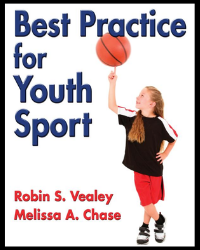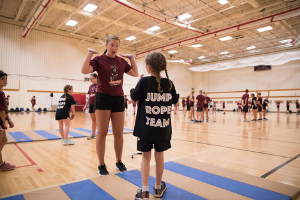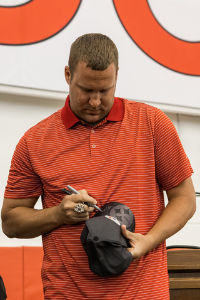Make Youth Sport Less About Adults. More About Children.


James M. Loy, Miami University
There was once a common saying about youth sport. “It’s all about the children.” Except that was back when it was mostly about encouraging children to build character, be active, try new things, and to have fun.
 “It's totally changed,” says Melissa Chase, Miami University professor of sport leadership and management (SLAM).
“It's totally changed,” says Melissa Chase, Miami University professor of sport leadership and management (SLAM).
Because today, youth sport is big business that’s become far more about the adults, which has led to a hyper-competitive culture that’s pushing children to become elite athletes at younger and younger ages.
How times have changed
“The model of what used to be more professional sport has trickled down to the point where now we see children that are eight, nine, ten, who should be sampling sports, trying all kinds of different activities, they're really pigeon-holed now,” says Chase. “This is the sport they're going to do, and they're going to do it year-round in a very specialized manner to try to develop their talent."
Around the country, the rise of this 15 billion dollar industry has seen many neighborhood leagues replaced with regional mega-tournaments. Camaraderie and self-discovery replaced with professionalization and specialization. Playfulness and joy replaced with performance analysis and an intense pressure to win.
Even though very few ever reach elite status, many parents, nevertheless, still feverishly pursue dreams of seeing their children earn scholarships by joining high-tech facilities, hiring top coaches, and buying all the best equipment. Which, ironically, can quickly rack up enormous costs that could have just as easily covered college tuition.
And while a small fraction of the most passionate young athletes may thrive in this environment, for the vast majority, this kind of pressure generally leads to darker places.
It can be a recipe for burnout, overuse injury, and a crisis of identity, Chase says.
Advice for parents and coaches
In their recent book, Best Practice for Youth Sport, Chase, along with her co-author, Miami SLAM professor Robin Vealey, cover the evolution of youth sport, and they explore a variety of developmentally appropriate strategies for young athletes. The book is a guide for parents and coaches who want youth sport to be a positive experience for children.
For starters, Chase recommends diversification over specialization.
That is, children should be allowed, even encouraged, to participate in a wider range of sport and non-sport activities. According to the researchers, being hyper-focused on a single sport not only increases the risk of burnout and injury. It can also be psychologically damaging.
“For most athletes, at some point, sport participation ends,” Chase says. “Sometimes it ends earlier than anticipated because of a career-ending injury. Or you're not good enough for the next level. So a young athlete whose whole identity is around being ‘this’ athlete, they're only known as this amazing volleyball player, and then that ends, they haven't really developed an identity outside of that. So being more well-rounded is certainly better for a lot of different mental health issues.”
At Miami, Chase also teaches students how to become effective coaches, which includes the importance of managing parental expectations and behaviors.
“As a coach, it’s your responsibility, one, to be an effective coach, to be aware of your behavior,” she says. “And to be aware of helping parents realize that, while their best intention might be to give their child year-round participation and specialization, that that's probably not the best way to develop talent.”
 As for the parents themselves, Chase understands that most mean well. They only want to help their child succeed. But, she says, there are better ways.
As for the parents themselves, Chase understands that most mean well. They only want to help their child succeed. But, she says, there are better ways.
First, “I really think this has to be child driven,” she says. “There has to be some love of the activity coming from the child. So read your child, and make sure they really are truly interested.”
Next, parents should also understand their child’s motive.
“Because children play sports for all kinds of different reasons,” Chase explains. “And, if you ask them, most of them will say because it's fun. So put your child in a sport that's fun. Meaning, there's a good coach, who keeps things in perspective. It's not all about winning. And the child gets to play. Because play is more fun.”
Finally, parents should also stress effort. Not ability.
Effort is something a child can control. Effort is about learning the value of hard work and dedication and the kinds of skills that translate to most aspects of life. On the other hand, stressing ability and outcome alone can be counterproductive.
“More harm than good”  Ben Roethlisberger signing autograph
Ben Roethlisberger signing autograph
Still, it is true. There is always a chance, however small it may be, that a few young athletes will become superstars. So what about those parents who still harbor those big dreams?
Chase has advice for them too.
“There are always exceptions,” she says. “But in my experience, if a middle school or high school athlete is going to make it to Division I, you're going to know it. And they could play multiple sports. That ability is there. As a parent, if you just support their interest and motivation to do it, they'll make it.
“By signing them up for too many specialized teams, too many specialized coaches, and not letting them self-identify in other ways, you could do more harm than good.”

